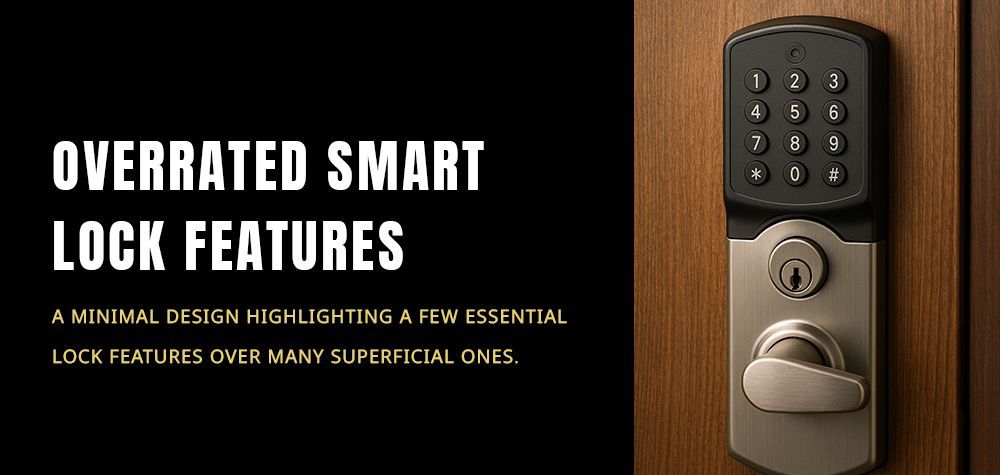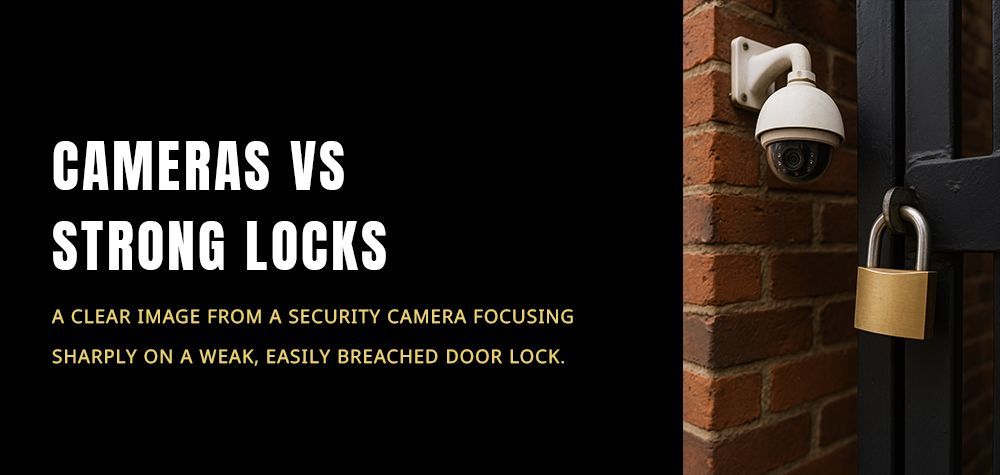How to Extract a Broken Key from a Lock
How to Extract a Broken Key from a Lock
Understanding the extent of the breakage is crucial in determining the approach for extracting the broken key from the lock. Whether it's a partial break where a portion of the key remains intact or a complete break leaving the key entirely lodged within the lock, a thorough assessment guides the extraction process. In cases of partial breakage, it's essential to gauge the size of the remaining key fragment and its orientation within the keyway. This assessment helps in selecting the appropriate tools and techniques for extraction, ensuring minimal damage to the lock mechanism. Additionally, understanding the extent of the breakage allows locksmiths or DIY enthusiasts to anticipate potential challenges and prepare accordingly, enhancing the likelihood of a successful extraction.
Identifying the position of the broken key within the lock is the next critical step in the extraction process. By carefully observing the keyway, one can determine the depth to which the key has broken and its orientation within the lock mechanism. This information is invaluable in selecting the most effective extraction method and minimizing the risk of further damage to the lock.
For instance, if the broken key fragment is protruding from the keyway, simple extraction tools such as needle-nose pliers or tweezers may suffice. However, if the key fragment is deeply lodged within the lock, specialized extractor tools or professional assistance may be required. By accurately identifying the position of the broken key, locksmiths or individuals attempting extraction can proceed with confidence, knowing they are employing the most appropriate methods for a successful outcome.
Preparation and Safety Measures
Gathering the necessary tools is the first step in preparing for the extraction of a broken key from a lock. Essential tools for this task include needle-nose pliers, tweezers, and potentially an extractor tool designed specifically for this purpose. Needle-nose pliers provide a firm grip and precise control, making them ideal for grasping key fragments protruding from the lock. Tweezers, with their fine tips, are useful for extracting smaller fragments or debris from the keyway. Additionally, an extractor tool, available in various designs, can assist in gripping and removing deeply lodged key fragments. By assembling these tools beforehand, individuals can approach the extraction process with confidence, knowing they have the necessary equipment to tackle the task effectively.
Ensuring the lock is not engaged before attempting extraction is a crucial safety measure to prevent further damage. Engaging the lock while a broken key is lodged within it can exacerbate the situation, potentially causing additional breakage or jamming of the lock mechanism. Before beginning the extraction process, it's essential to ensure that the lock is in the unlocked position. If the lock is engaged, use a spare key or alternative method to disengage it before proceeding with extraction. By taking this precautionary step, individuals can minimize the risk of complications and facilitate smoother extraction of the broken key from the lock.
Read more about Types of locks and their application!
Techniques for Key Extraction
When it comes to extracting a broken key from a lock, employing the right techniques can make all the difference in achieving a successful outcome. Here are some tried-and-tested methods for key extraction:
Using needle-nose pliers or tweezers for visible key fragments: If a portion of the broken key is protruding from the lock's keyway, needle-nose pliers or tweezers can be invaluable tools for grasping and removing the fragment. With their fine tips and strong grip, these tools allow for precise manipulation and control, making them ideal for extracting visible key fragments. Carefully insert the pliers or tweezers into the keyway, gripping the fragment firmly, and gently pull it out. Exercise caution to avoid applying excessive force, as this could further damage the lock mechanism.
Employing an extractor tool for deeper key fragments: For key fragments that are deeply lodged within the lock and out of reach of conventional tools, an extractor tool can be an effective solution.
Extractor tools are specifically designed to grip and remove broken key fragments from the keyway, even in hard-to-reach areas. Choose an extractor tool that is compatible with the type and size of your lock, ensuring a secure grip on the broken key fragment. Insert the extractor tool into the keyway alongside the fragment, applying gentle pressure to engage the gripping mechanism. Slowly and steadily pull the extractor tool out of the keyway, allowing it to draw the broken key fragment out with it.
Applying lubricants to ease the extraction process: In cases where the broken key fragment is stubbornly lodged within the lock, applying lubricants can help loosen it and ease the extraction process. Graphite powder or silicone spray are commonly used lubricants for this purpose, as they penetrate the lock mechanism and reduce friction. Carefully apply the lubricant to the keyway and around the broken key fragment, allowing it to seep into any gaps or crevices. Give the lubricant some time to work its magic, then attempt to extract the broken key fragment using pliers, tweezers, or an extractor tool. The lubricant should help loosen the fragment and facilitate smoother extraction without causing damage to the lock.
By utilizing these techniques for key extraction, individuals can increase their chances of successfully removing broken key fragments from locks and restoring functionality to the mechanism. Remember to proceed with caution and patience, taking care to avoid further damage to the lock during the extraction process.
Step-by-Step Extraction Process
Successfully extracting a broken key from a lock requires a systematic approach and careful execution. Here's a detailed step-by-step guide to help you navigate the extraction process with confidence:
Inserting the Tool into the Keyway Alongside the Broken Key Fragment:
Begin by selecting the appropriate extraction tool for the job, whether it's needle-nose pliers, tweezers, or an extractor tool. Carefully insert the tool into the keyway alongside the broken key fragment, ensuring that it makes full contact with the fragment. Take your time to position the tool securely and accurately to maximize grip on the fragment.
Carefully Maneuvering the Tool to Grasp onto the Broken Key Piece:
With the tool inserted into the keyway, gently maneuver it to grasp onto the broken key piece. Use steady, controlled movements to guide the tool into position and engage with the fragment. Depending on the size and orientation of the fragment, you may need to adjust the angle or position of the tool to achieve a secure grip.
Applying Gentle Pressure to Extract the Broken Key Fragment:
Once the tool is securely positioned around the broken key fragment, apply gentle pressure to extract the fragment from the lock. Use caution to avoid applying excessive force, as this could risk further damage to the lock mechanism. Instead, exert steady, controlled pressure in the direction opposite to the key's insertion, gradually easing the fragment out of the keyway.
Reassessing and Adjusting as Needed:
Throughout the extraction process, periodically reassess the position and grip of the extraction tool, making any necessary adjustments to ensure optimal engagement with the broken key fragment. If initial attempts are unsuccessful, consider repositioning the tool or trying a different extraction technique to achieve better results.
Completing the Extraction and Testing the Lock:
Once the broken key fragment has been successfully extracted from the lock, carefully remove the extraction tool from the keyway. Take a moment to visually inspect the lock and keyway for any signs of damage or debris. With the key fragment removed, test the lock with a spare key to ensure that it operates smoothly and securely.
Read more about the pros of hiring a locksmith to rekey locks!
Additional Tips and Considerations
Patience and precision are paramount to successful extraction when dealing with a broken key in a lock. Rushing the process or using excessive force can lead to further damage, complicating the extraction process and potentially causing irreparable harm to the lock mechanism. Take your time to carefully maneuver the extraction tool and apply gentle pressure, ensuring that each step is executed with precision.
Avoiding excessive force is crucial to prevent damage to the lock during the extraction process. Applying too much pressure or using improper techniques can result in bent or broken components, rendering the lock inoperable and necessitating costly repairs. Instead, focus on using controlled movements and gradual pressure to coax the broken key fragment out of the lock without causing harm.
Seeking professional locksmith assistance is advisable if extraction attempts fail or if you encounter any challenges during the process. Locksmiths are trained and experienced in handling a wide range of lock-related issues, including broken key extraction. They have the specialized tools and expertise needed to safely and effectively remove broken key fragments from locks without causing damage. Don't hesitate to contact a locksmith if you're unable to extract the broken key yourself, as attempting to force the key out could worsen the situation.
Testing and Final Checks
After successfully extracting the broken key from the lock, it's essential to perform thorough testing and final checks to ensure that the lock is functioning correctly. Test the lock with a spare key to verify that it operates smoothly and securely, engaging and disengaging without any resistance or issues. Additionally, conduct a visual inspection of the lock and keyway to check for any signs of damage or debris that may have been left behind during the extraction process. By performing these final checks, you can confirm that the lock is in proper working order and that no further action is required.
Conclusion
Successfully extracting a broken key from a lock requires patience, the right tools, and careful technique. By following the steps and considerations outlined in this guide, you can safely remove the broken key and restore functionality to your lock. Remember to approach the extraction process with patience and precision, avoiding excessive force and seeking professional assistance if needed. With the right approach and attention to detail, you can effectively resolve the issue of a broken key in your lock and ensure the security of your property.
Call Us Any Time!






